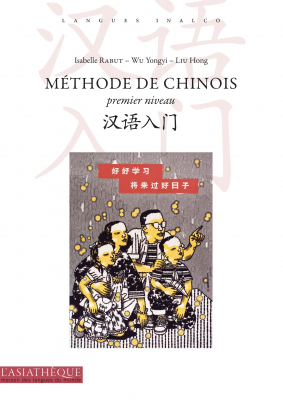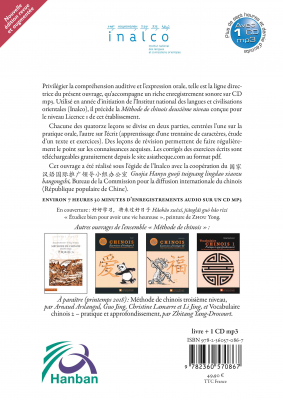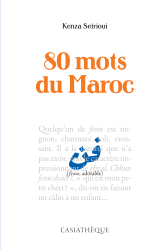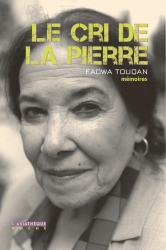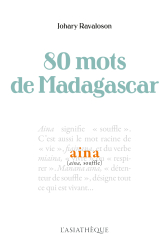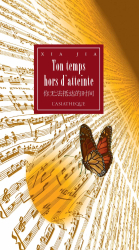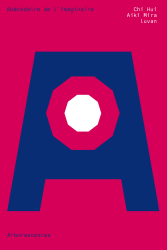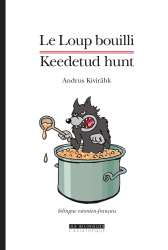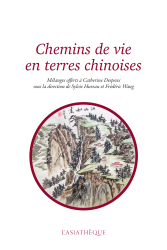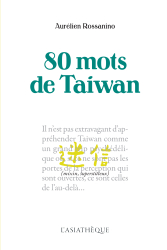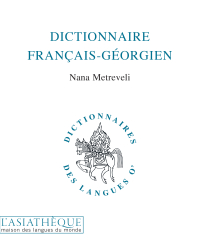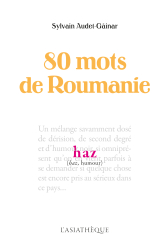Details
Format: Paperback
ISBN: 9782360572687
Collection: Langues INALCO
17 x 24 cm
Weight: 880 gr
Pages: 528
Edition :
2020
First publication: 03/11/2003
Last printing: 10-2022
Méthode de chinois premier niveau (Livre + audio)
To promote listening comprehension and oral expression, this is the guideline of this book, which is accompanied by a rich sound recording (QR codes inside the book and audio download on the site). Used during the initiation year of the National Institute of Oriental Languages and Civilizations (Inalco), it precedes the Chinese Method, second level (L'Asiathèque, New edition 2017) designed for the License 1 of this establishment . Based on a communicative approach, this first year Chinese textbook provides an understanding of the language through not only grammar and vocabulary lessons, but also oral practice. The book covers a range of situations such as how to introduce yourself, recount an experience, position yourself in a conversation, etc. The logic of the language is also taught through the rules of syntax, lexical constructions and structure, of the characters. The second part of each lesson is devoted to learning Chinese characters (approximately 30 per lesson). Each of the fourteen lessons is divided into two parts, one focused on speaking, the other on writing (learn about 30 characters, study a text, and exercise). Review lessons provide regular updating of acquired knowledge. The answers to the written exercises can be downloaded free of charge from this site (see Media page). Supplement to the method (free): Pinyin transcription of texts and dialogues Also available to accompany the Chinese Method, first level: CHINESE writing exercises I and Chinese vocabulary first level - practice and deepening.
CONTRIBUTORS' BIOGRAPHIES
Isabelle Rabut
Isabelle Rabut is a university professor, she teaches Chinese language and literature at Inalco.
Wu Yongyi
Wu Yongyi is a professor at Huadong Normal University.
Liu Hong
Liu Hong, senior lecturer at the Institut national des langues et civilisations orientales, defended a thesis entitled Une vision de la Chine lettrée et de sa bureaucratie sous les Song du Nord (960-1127) (2007). Her research focuses on the literature of notebooks (Biji 筆記) and the history of the literati of the Song period. She has published ‘The Dhāranī Practice of Great Compassion in Twelfth-Century China According to the Yi jian zhi (1198)’ in Empreintes du tantrisme en Chine et en Asie orientale (Peeters, Louvain, 2017) and ‘Les Relations entre les monoines bouddhistes et les lettrés lors de la renaissance confucéenne dans la Chine des Song du Nord’ in Construction and Interpretation of the Daotong: In the Perspectives of Chinese and Korean Neo-Confucianism (no. 4, Zhedong Xueshu, 2020).
TABLE OF CONTENTS
Avant-propos
Présentation de la méthode et conseils d’utilisation
Remerciements
Tableau général des transcriptions phonétiques chinoises (pinyin)
Leçon a : Introduction (1)
A. Pinyin (1) – Expression orale et écoute
• Présentation générale de la langue et de sa notation phonétique
• Exercices de prononciation
• Exercices de dictée
B. EXPRESSION ÉCRITE
• Les premiers caractères (1)
• Écriture : Les huit traits de base
• Lexicologie : Caractère, syllabe, morphème et mot
• Exercices écrits
Leçon b : Introduction (2)
A. Pinyin (2) – Expression orale et écoute
• Règles de prononciation
• Exercices de prononciation
B. EXPRESSION ÉCRITE
• Premiers caractères (2)
• Écriture : Les traits combinés
• Lexicologie : Lexique classique, lexique moderne
• Exercices écrits
Leçon 1 : Se présenter et présenter
A. Compréhension et applications orales
B. EXPRESSION ÉCRITE
• Caractères
• Écriture : L’ordre des traits
• Vocabulaire
• Grammaire
• Lexicologie : Noms de famille et prénoms, transcriptions des noms propre étrangers
• Textes : 1. 我是北京人 2. 她是法国人
• Exercices écrits
Leçon 2 : Description (1)
A. Compréhension et applications orales
B. EXPRESSION ÉCRITE
• Caractères
• Écriture : Disposition structurale du caractère
• Vocabulaire
• Grammaire
• Lexicologie : Le lexique chinois et les catégories
• Textes : 1. 他们都很忙 2. 我的房间不太大
• Exercices écrits
Leçon 3 : Description (2) et aimer, préférer
A. Compréhension et applications orales
B. EXPRESSION ÉCRITE
• Caractères
• Écriture
– Les composants
– Composants sémantiques et composants phoniques
• Vocabulaire
• Grammaire
• Lexicologie : Mots simples
• Texte : 她喜欢蓝的还是喜欢红的?
• Exercices écrits
Leçon 4 : Demander des informations (l’heure, le lieu et la manière)
A. Compréhension et applications orales
B. EXPRESSION ÉCRITE
• Caractères
• Écriture :
– La variante graphique de certains composants autonomes
– Composants sémantiques (1)
• Vocabulaire
• Grammaire
• Lexicologie : Mots complexes formés par affixation et par redoublement
• Textes : 1. 马丽每天坐地铁去上班 2. 她中午和张先生有约会
• Exercices écrits
Révision 1 (leçons 1-4)
Leçon 5 : Proposer, accepter, refuser, donner un ordre
A. Compréhension et applications orales
B. Expression écrite
• Caractères
• Écriture : Les homophones
• Vocabulaire
• Grammaire
• Lexicologie : Mots complexes formés par composition (I)
• Textes : 1. 张大海要在家里开晚会 2. 张大海让李江跟他去买东西
• Exercices écrits
Leçon 6 : Appréciations et jugements
A. Compréhension et applications orales
B. Expression écrite
• Caractères
• Écriture : Recherche d’un caractère dans un dictionnaire
• Vocabulaire
• Grammaire
• Lexicologie : Mots complexes formés par composition (II)
• Texte : 小丽学汉语学得不错
• Exercices écrits
Leçon 7 : Situer et localiser
A. Compréhension et applications orales
B. EXPRESSION ÉCRITE
• Caractères
• Écriture : Composants sémantiques (2)
• Vocabulaire
• Grammaire
• Texte : 我家就在咖啡馆的旁边
• Exercices écrits
Révision 2 (leçons 5-7)
Leçon 8 : Capacité, incapacité, permission, interdiction
A. Compréhension et applications orales
B. Expression écrite
• Caractères
• Écriture
– Caractères ayant plus d’une prononciation
– Composants sémantiques (3)
• Vocabulaire
• Grammaire
• Lexicologie : Mots complexes formés par composition (III)
• Texte : “你别喝酒!”
• Exercices écrits
Leçon 9 : Échanger des informations
A. Compréhension et applications orales
B. Expression écrite
• Caractères
• Écriture : L’évolution du graphisme des caractères
• Vocabulaire
• Grammaire
• Texte : “飞机票怎么贵了?”
• Exercices écrits
Leçon 10 : Se situer dans le temps
A. Compréhension et applications orales
B. Expression écrite
• Caractères
• Écriture : Les procédés de formation des caractères (1)
• Vocabulaire
• Grammaire
• Lexicologie : Emploi des verbes sécables
• Texte : 快要考试了,我正在复习呢!
• Exercices écrits
Leçon 11 : Situer dans le passé et raconter chronologiquement
A. Compréhension et applications orales
B. Expression écrite
• Caractères
• Écriture : Les procédés de formation des caractères (2)
• Vocabulaire
• Grammaire
• Texte : 我是十八岁那年来巴黎的
• Exercices écrits
Révision 3 (leçons 8-11)
Leçon 12 : Parler de son expérience vécue
A. Compréhension et applications orales
B. Expression écrite
• Caractères
• Écriture : La simplification de la graphie des caractères
• Vocabulaire
• Grammaire
• Lexicologie : Verbes dissyllabiques
• Texte : 我以前来过一次法国
• Exercices écrits
Leçon 13 : Projets et intentions
A. Compréhension et applications orales
B. Expression écrite
• Caractères
• Écriture : La ponctuation
• Vocabulaire
• Grammaire
• Lexicologie : Semi-suffixe dans la formation des noms
• Textes : 1. 考完试以后, 他有许多事要做 2. 他骑自行车骑了两个钟头
3. 他打算去中国学一年历史
• Exercices écrits
Leçon 14 : Comparer
A. Compréhension et applications orales
B. Expression écrite
• Caractères
• Vocabulaire
• Grammaire
• Texte : 他比我妹妹小两岁
• Exercices écrits
Révision 4 (leçons 12-14)
Les 80 clés du premier niveau
Index grammatical
Index lexical
